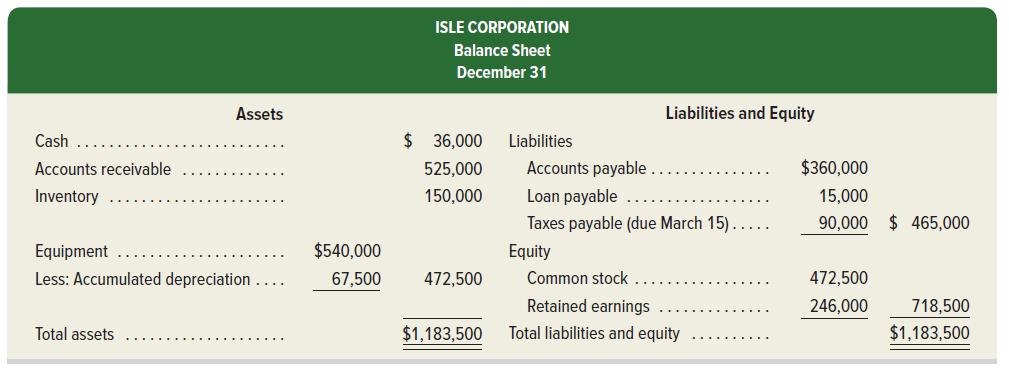Isle Corp., a merchandising company, reports the following balance sheet at December 31. To prepare a master
Question:
Isle Corp., a merchandising company, reports the following balance sheet at December 31.

To prepare a master budget for January, February, and March, use the following information.
a. The company’s single product is purchased for $30 per unit and resold for $45 per unit. The inventory level of 5,000 units on December 31 is more than management’s desired level, which is 25% of the next month’s budgeted sales units. Budgeted sales are January, 6,000 units; February, 8,000 units; March, 10,000 units; and April, 9,000 units. All sales are on credit.
b. Cash receipts from sales are budgeted as follows: January, $382,500; February, $421,500; March, $355,500.
c. Cash payments for merchandise purchases are budgeted as follows: January, $72,000; February, $306,000; March, $123,000.
d. Sales commissions equal to 20% of sales dollars are paid each month. Sales salaries (excluding commissions) are $7,500 per month.
e. General and administrative salaries are $12,000 per month. Maintenance expense equals $3,000 per month and is paid in cash.
f. New equipment purchases are budgeted as follows: January, $72,000; February, $96,000; and March, $28,800. Budgeted depreciation expense is January, $6,375; February, $7,375; and March, $7,675.
g. The company budgets a land purchase at the end of March at a cost of $150,000, which will be paid with cash on March 31.
h. The company has a contract with its bank to obtain additional loans as needed. The interest rate is 1% per month, and interest is paid at each month-end based on the beginning-month balance. Partial or full payments on these loans are made on the last day of the month. The company maintains a minimum ending cash balance of $36,000 at the end of each month.
i. The income tax rate for the company is 40%. Income taxes on the first quarter’s income will not be paid until April 15.
Required
Prepare a master budget for the months of January, February, and March that has the following budgets (round amounts to the nearest dollar).
1. Sales budgets.
2. Merchandise purchases budgets.
3. Selling expense budgets.
4. General and administrative expense budgets.
5. Capital expenditures budgets.
6. Cash budgets.
7. Budgeted income statement for entire quarter (not monthly) ended March 31.
8. Budgeted balance sheet as of March 31.
Step by Step Answer:






